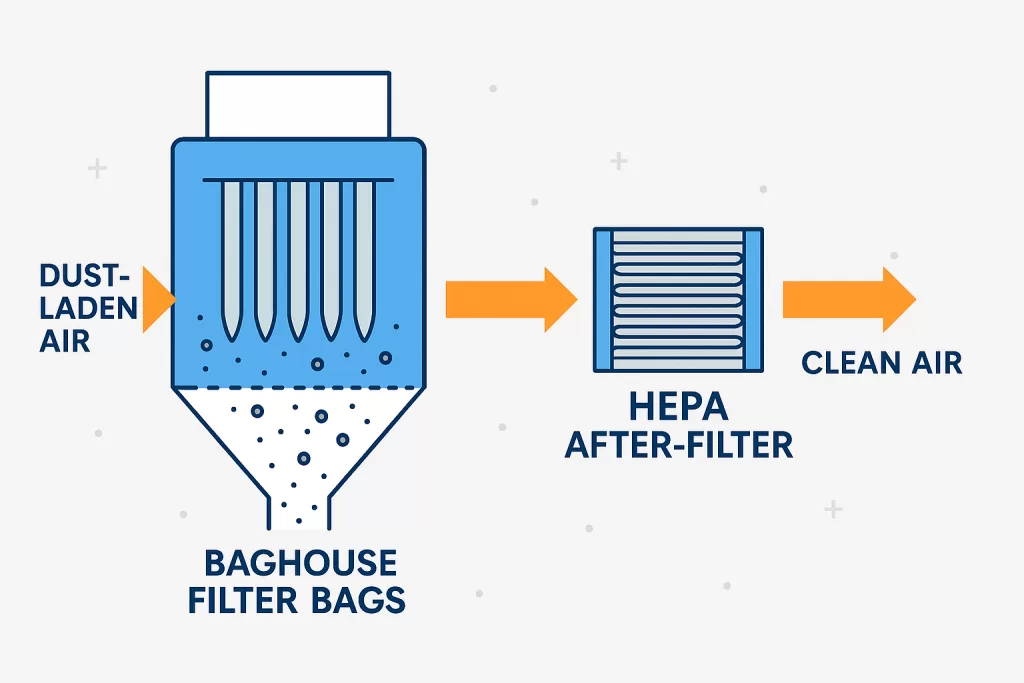By Omela Filtration — Industrial Filtration Experts
In modern industrial environments, emissions control is a critical factor for both environmental compliance and workplace safety. While baghouse dust collectors effectively capture most particulate matter, certain processes generate ultra-fine dust or fumes that can escape even the most efficient baghouse filter bags.
This is where a HEPA after-filter becomes essential. Installed downstream of a primary dust collector, the HEPA (High-Efficiency Particulate Air) stage ensures that any residual fine particles are trapped before clean air is released back into the atmosphere or recirculated indoors.
Industries such as power generation, metal processing, cement production, and chemical manufacturing increasingly rely on HEPA after-filters to meet the world’s strictest emission standards—often below 1 mg/Nm³.
A HEPA after-filter is designed to capture particles that the main baghouse cannot retain. While a baghouse filter equipped with PTFE, PPS, or aramid filter bags typically achieves filtration efficiencies of 99.9% for particles down to 1 µm, a HEPA filter extends this efficiency to 99.97% for particles as small as 0.3 µm.
The working process typically follows these stages:
Proper design ensures that the HEPA filter operates under reduced dust load, extending its service life and maintaining stable filtration efficiency over long operating cycles.

Omela Filtration engineers custom-tailor after-filter systems to integrate seamlessly with your existing dust collector setup. Whether your application involves hot gases, corrosive environments, or ultra-fine emissions, our experts ensure a balanced system design that meets regulatory and operational goals.
Key Advantages:
In these sectors, integrating a HEPA after-filter with high-performance baghouse filter bags ensures complete control over emissions and long-term operational reliability.
A HEPA after-filter is not always necessary—but when ultra-clean air is required or regulations demand extremely low emissions, it becomes an indispensable component of a modern dust collector system. Properly selected and engineered, it complements the main baghouse and protects downstream equipment and the environment.
Omela Filtration combines advanced engineering with premium filter media, including PTFE, PPS, and aramid filter bags, to deliver reliable performance for every industry.
Understanding the Risk: Dust Explosion Fundamentals Dust explosions represent one of the most serious safety hazards in industrial
Introduction Efficient particulate collection is central to modern industrial air pollution control, making the baghouse a familia
By Omela Filtration — Industrial Filtration Experts 1. Industry Background and the Real Problem In pulse-jet dust collector syst